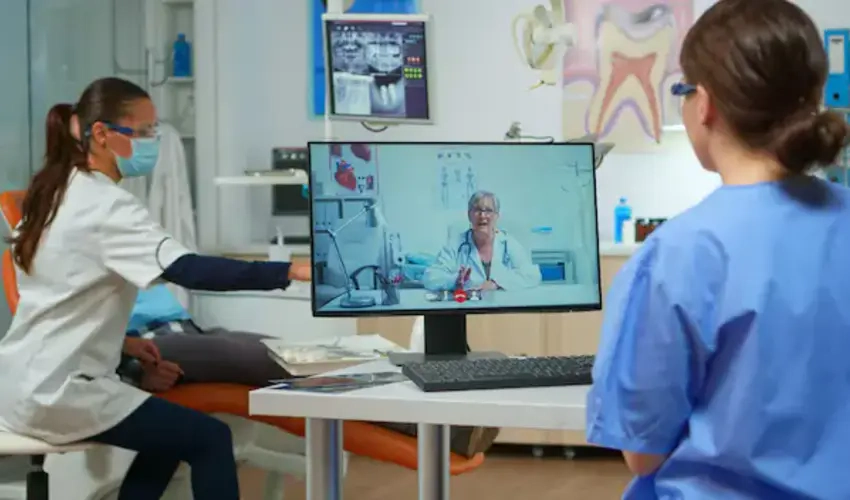Technology is changing healthcare. Virtual assistants for medical practice are improving how clinics and hospitals work. They help doctors, nurses, and staff manage tasks efficiently. These AI-powered assistants save time, reduce workload, and improve patient care. This article explores how virtual assistants are shaping the future of healthcare automation.
What Are Virtual Assistants for Medical Practice?
Virtual assistants for medical practice are AI-powered tools. They help healthcare providers with daily tasks. These assistants handle administrative work, scheduling, and patient support. They also assist in managing medical records and answering patient queries.
These assistants use chatbots, voice recognition, and machine learning. They work through mobile apps, websites, and phone systems. Their goal is to make healthcare services faster and more efficient.
How Do Virtual Assistants Work?
Virtual assistants use AI to process information. They analyze patient data and respond to queries. They also assist in appointment scheduling and reminders. Some virtual assistants use voice commands. Others use text-based chat systems.
The process includes:
- Patient Inquiry: Patients ask questions through chat, voice, or apps.
- AI Response: The virtual assistant provides answers based on stored medical information.
- Task Automation: The assistant schedules appointments, updates records, or sends reminders.
- Doctor Assistance: The system alerts doctors if human intervention is needed.
This automation speeds up healthcare services. It also reduces the workload on medical staff.
Benefits of Virtual Assistants for Medical Practice
1. Saves Time and Reduces Workload
Doctors and nurses handle many tasks daily. Virtual assistants manage scheduling, reminders, and paperwork. This frees up time for patient care.
2. Improves Patient Communication
Patients get quick responses to health-related questions. They can check symptoms, book appointments, or request prescriptions easily.
3. Reduces Human Errors
Manual data entry can lead to mistakes. Virtual assistants reduce errors by automating record-keeping and appointment scheduling.
4. Enhances Telemedicine Services
Telemedicine is growing fast. Virtual assistants help doctors and patients connect smoothly. They manage video calls, patient histories, and follow-ups.
5. Provides 24/7 Support
Unlike human staff, virtual assistants work 24/7. They assist patients anytime, reducing waiting times for basic inquiries.
6. Reduces Healthcare Costs
Automation lowers administrative costs. Clinics and hospitals save money by using AI for repetitive tasks.
Challenges of Using Virtual Assistants
1. Privacy and Security Risks
Healthcare data is sensitive. Virtual assistants must follow strict security rules to protect patient information.
2. Limited Understanding of Complex Cases
AI can handle simple tasks. However, it may struggle with complex medical cases. Human doctors are still needed for final decisions.
3. Patient Trust Issues
Some patients prefer speaking with human staff. They may not trust AI for medical advice.
4. Technology Barriers
Not all patients are familiar with AI tools. Some may find it hard to use virtual assistants.
The Future of Virtual Assistants in Healthcare
The future of virtual assistants for medical practice looks promising. AI is improving every day. Virtual assistants will become more accurate and efficient.
1. AI Advancements
Future AI models will understand medical conditions better. They will provide more accurate responses.
2. Integration with Wearable Devices
Smartwatches and fitness trackers will connect with virtual assistants. This will help monitor patient health in real-time.
3. More Personalized Healthcare
Virtual assistants will analyze patient history. They will provide customized healthcare advice and treatment plans.
4. Better Coordination with Hospitals
AI systems will connect directly with hospital databases. This will improve patient management and emergency response.
How to Implement Virtual Assistants in a Medical Practice
1. Choose the Right AI System
Select a virtual assistant that suits your medical practice’s needs.
2. Train Staff and Patients
Ensure staff and patients know how to use the assistant properly.
3. Focus on Security
Use strong security measures to protect patient data.
4. Monitor Performance
Regularly update and improve the virtual assistant for better efficiency.
Conclusion
Virtual assistants for medical practice are the future of healthcare automation. They improve efficiency, reduce workload, and enhance patient care. Despite some challenges, their benefits outweigh the risks. As technology advances, virtual assistants will become even more useful in medical services.

